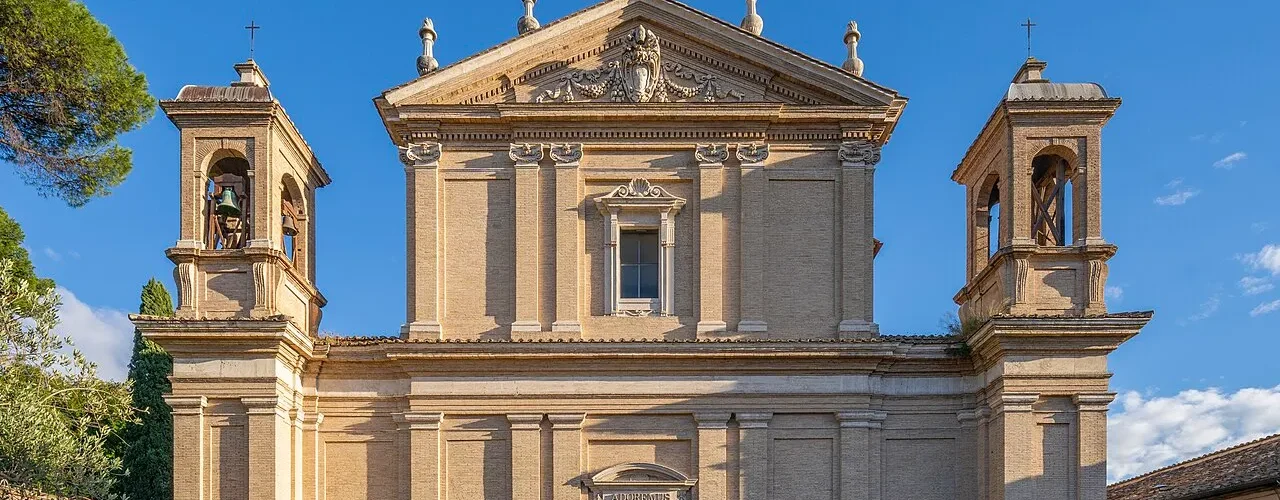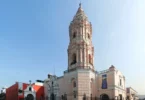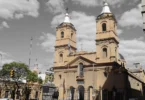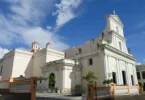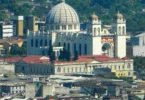Introduction
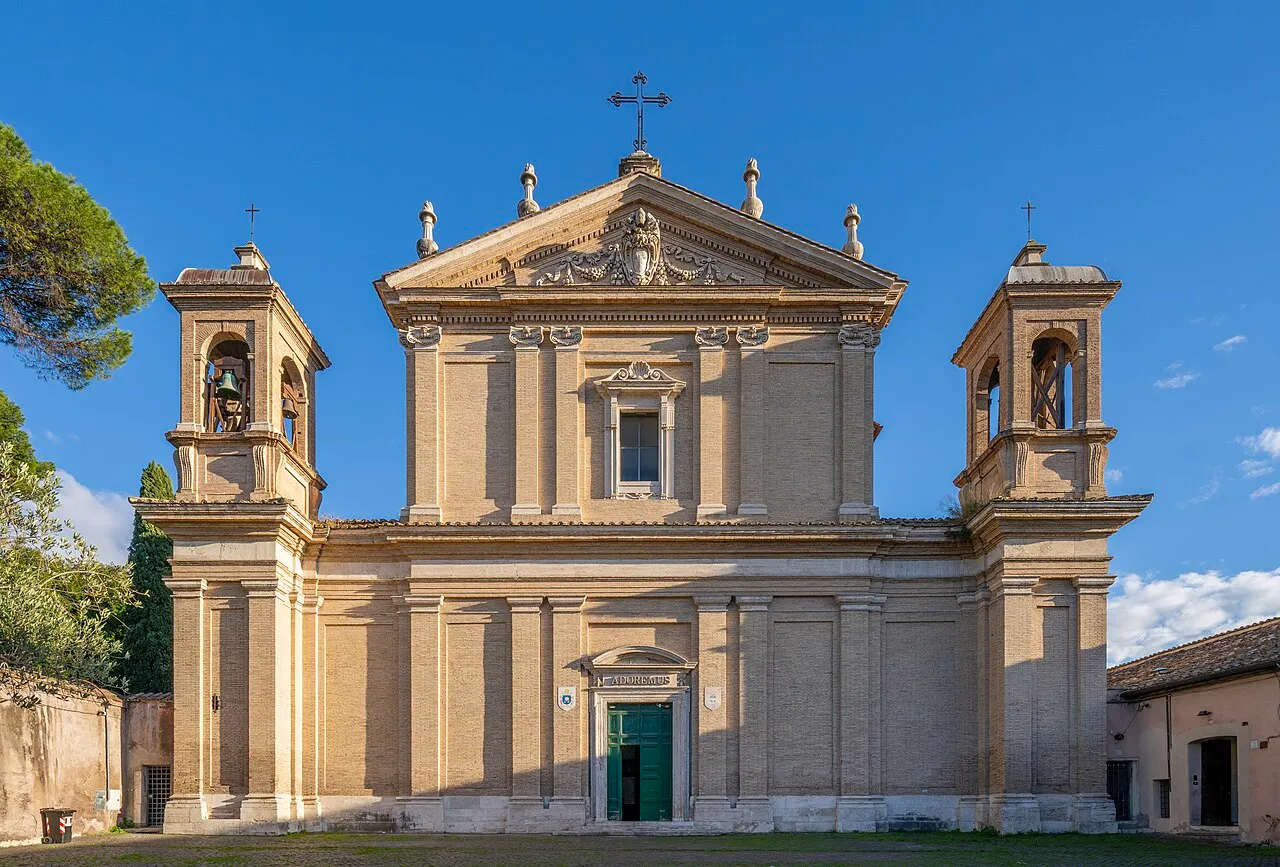
The Basilica of Sant’Anastasia al Palatino is a prominent Catholic church located in Rome, nestled on the slopes of the Palatine Hill, one of the most historically significant areas of the city. This sacred site holds the title of a minor basilica, a designation that reflects its religious and cultural importance. The church also serves as the national church for two vibrant communities in Rome: the Peruvian community and the Indian community of the Syro-Malabar Rite, highlighting its diverse and inclusive role in the city’s Catholic life.
Sant’Anastasia is not only a place of worship but also one of the designated station churches of Rome, a key aspect of the city’s ancient tradition of pilgrimage and devotion, particularly during Lent. As a titular church, it is assigned to a cardinal-priest, further emphasizing its significant standing within the Roman Catholic hierarchy. Interestingly, the church is under the ownership and pastoral care of the Syro-Malabar Catholic Church, which is part of the larger Eastern Catholic Church family. This deep connection to both Roman and Eastern Catholic traditions makes Sant’Anastasia a unique and important center of faith in the heart of Rome.
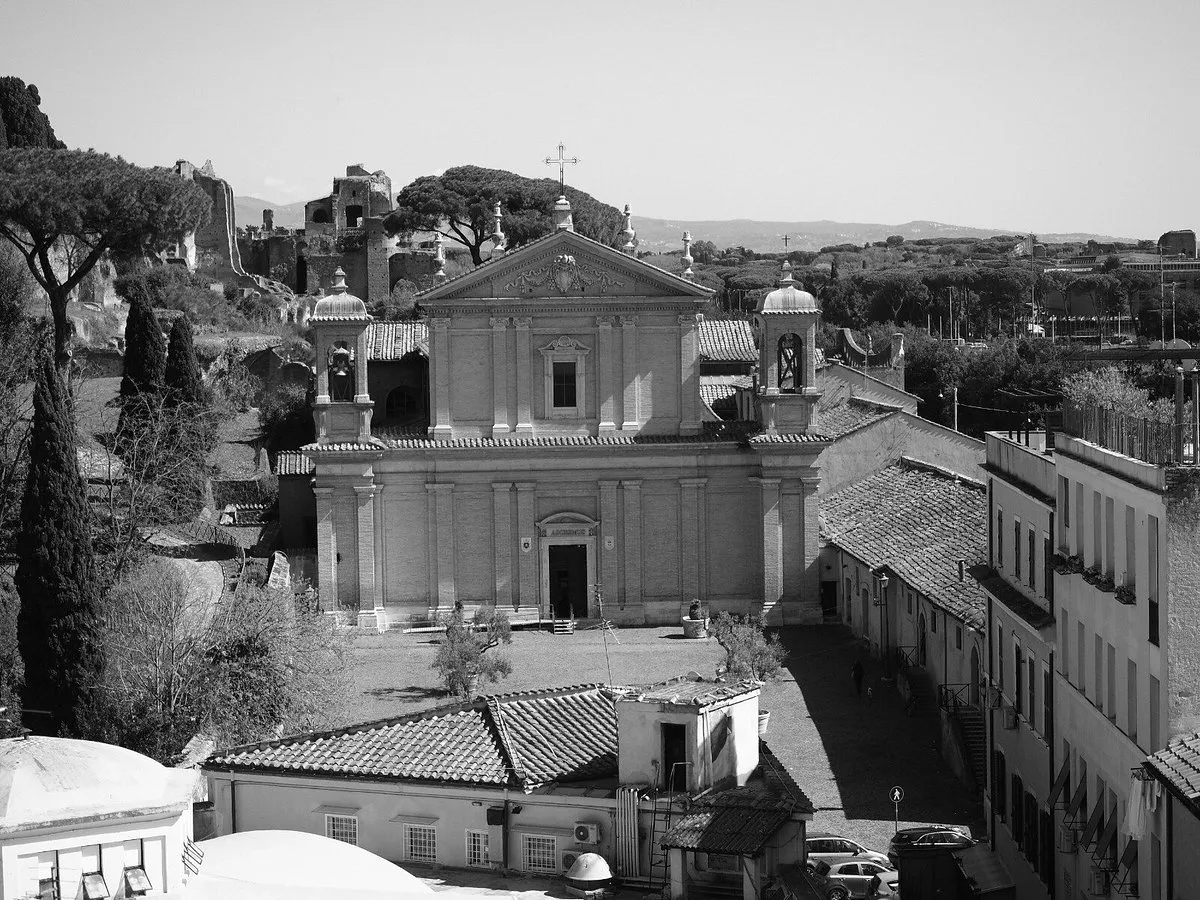
The Basilica of Sant’Anastasia al Palatino was constructed in the early 4th century, possibly between 325 and 326 AD. It stands on pre-existing Roman architecture, incorporating various layers of earlier buildings, including tabernae (shops) and private residences. These structures were located along a road on the southwestern slopes of the Palatine Hill, near the outer limits of the Circus Maximus. The church was initially dedicated to Saint Anastasia of Sirmium, a Christian martyr who suffered during the reign of Emperor Diocletian (281-304 AD). By the time of the synod in 499 AD, the church was already registered under the titulus Anastasiae.
The Basilica has a strong historical connection with prominent figures such as St. Jerome and St. Leo the Great. Tradition holds that St. Jerome, who is best known for his translation of the Bible into Latin (the Vulgate), resided in this church. He is also said to have brought important relics from the Holy Land to Rome, some of which remain in the church today. St. Leo the Great, one of the most influential Popes of the 5th century, is also traditionally associated with Sant’Anastasia.
Over the centuries, the Basilica underwent several restorations. Notable efforts include work commissioned by Pope Damasus I (366-383), Pope Hilary (461-468), Pope John VII (705-707), Pope Leo III (795-816), and Pope Gregory IV (827-844). The church’s current structure largely reflects a major restoration carried out in 1636 under Pope Urban VIII, which repaired the portico and facade that had been damaged. Subsequent refurbishments took place in the 19th century, under Popes Pius VII and Pius IX.
For many centuries, the Basilica served as the starting point for the penitential procession led by the Pope on Ash Wednesday. This procession culminated at the Basilica of Santa Sabina, where the first Mass of Lent was celebrated.
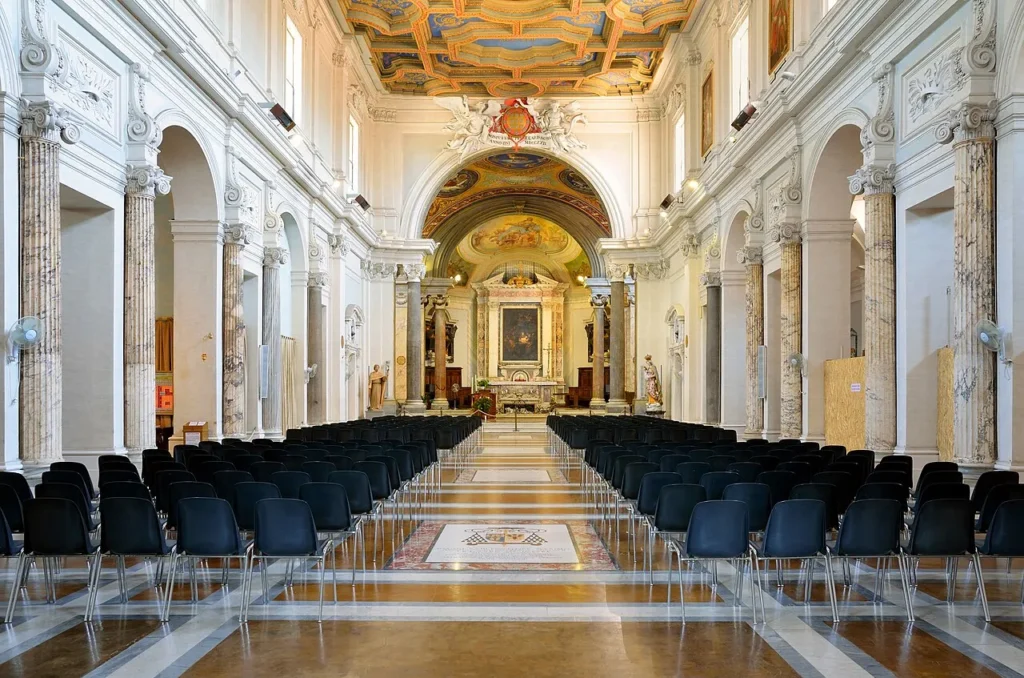
Architectural Styles: Baroque architecture , Renaissance architecture.
Art and Architecture
The architectural splendor and artistic heritage of the Basilica of Sant’Anastasia are notable. The church’s 1636 restoration, commissioned by Pope Urban VIII Barberini, gave the building its current appearance. The facade, with its lower Doric and upper Ionic order, was reconstructed after a cyclone in 1634 caused significant damage. The nave of the church is flanked by pilasters, which incorporate ancient Roman marble and granite columns—believed to have come from the Temple of Neptune, once located on the Palatine Hill. The ceiling of the Basilica is another architectural highlight, decorated with intricate cassetone (coffered) designs. The central fresco, painted by Michelangelo Cerruti in 1722, depicts the Martyrdom of Saint Anastasia. This fresco was commissioned under the patronage of Cardinal Nuno da Cunha e Ataíde. In addition, the presbytery was lavishly decorated with marble work by the Febei family in 1705, funded by Cardinal Giambattista Costaguti. Beneath the main altar, the relics of Saint Anastasia are believed to be sheltered.
The main altarpiece behind the altar is a depiction of the Nativity, painted by Lazzaro Baldi. The altar itself houses a powerful statue of Saint Anastasia, sculpted by Ercole Ferrata. The statue, which shows the saint in a recumbent position on a flaming pyre, is influenced by the emotional depth seen in Gian Lorenzo Bernini’s Beata Ludovica Albertoni. Several other significant works of art adorn the church. The first chapel on the right features a painting of St. John the Baptist by Pier Francesco Mola, while the last chapel on the right contains a fresco illustrating scenes from the lives of Saints Carlo Borromeo and Filippo Neri, painted by Lazzaro Baldi. The right transept displays a painting of St. Toribio, created by Francesco Trevisani in 1726.
In the left transept, there is a Madonna of the Rosary, another work by Lazzaro Baldi, as well as the monumental tomb of Cardinal Angelo Mai. This neoclassical tomb, designed by Giovanni Maria Benzoni, is a striking feature of the Basilica. The final chapel on the left is dedicated to St. Jerome and houses an altarpiece of the saint by Domenichino. According to tradition, the chalice used by St. Jerome is kept in this chapel. The adjacent chapel contains a painting of Saints Giorgio and Bishop Publio by Étienne Parrocel.
Exterior of the Basilica of Sant'Anastasia al Palatino
Layout and Fabric
The Basilica of Sant’Anastasia has a rectangular floor plan with a semi-circular apse at the exterior. Over time, small external chapels were added on either side of the church by modifying the original side walls of the aisles. The roofs of the nave and aisles are pitched and tiled, while the transept features a separate T-shaped roof that connects with the nave’s roof. The apse also has a pitched roof, divided into six sectors. Notably, there are remnants of 4th-century fabric in the apse and right transept, as well as in the left transept, where ancient brickwork from the original insula (multi-storied dwelling) can be seen.
A distinctive feature of the exterior is the variety of rooflines, with the left-hand nave aisle displaying three separate roofs of different pitches. This irregularity is not intended to be viewed as a focal point but is part of the church’s complex structure. There is evidence of multiple historical renovations on the main nave walls, including eleven small double-arched windows and brickwork from the 9th-century restoration, along with a blocked Gothic-style window from the 15th century. The transept has a slight asymmetry, with its right side extending beyond the aisle, while the left side ends slightly within the line of the aisle wall. This creates a visual imbalance.
Facade
The two-storey façade of the Basilica is built of pink brick with limestone architectural details. The first storey features Doric pilasters flanking the central entrance, with additional pilasters marking the corners of the nave frontage. The pilasters support a brick entablature that includes a molded architrave, a blank stone frieze (which likely once contained an inscription), and a cornice that is unusually tiled at its edge.
The entrance features a Baroque doorcase with a segmental pediment. The second storey has Ionic pilasters framing a large rectangular window, adorned with a Baroque pediment. The tympanum of the pediment includes a coat-of-arms surrounded by decorative swags, ribbons, and cornucopias. The campanili (bell towers) are extensions of the façade design, with each featuring Doric pilasters supporting an entablature and topped by a kiosk with a low ogee cupola and a cross finial. Notably, only the right-hand campanile houses bells. The façade also features the Barberini family’s heraldic symbol, the bee, carved into the stonework as a reminder of Pope Urban VIII’s involvement in the church’s restoration.
Interior of the Basilica of Sant'Anastasia al Palatino
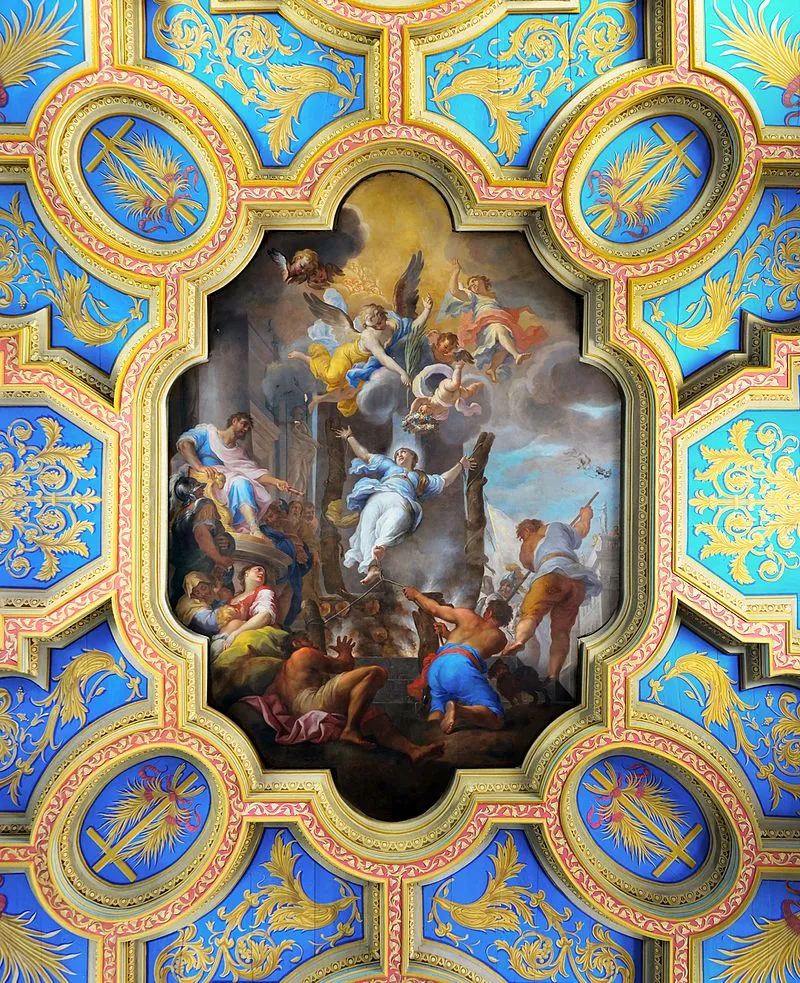
Layout and Fabric
Upon entering through the main doorway, visitors are greeted by a small loggia separated from the nave by a pair of pillars, marking the first structural bay of the church. Beyond this is a second bay with the sacristies flanking the aisles. These sacristies were added during the 18th-century restoration. The right sacristy is a narrow room with an exit behind the campanile, while the left sacristy contains two rooms with separate roofs.
The interior is characterized by an unusual design in the nave arcades. The nave features six pillars on each side, but four of these are paired and flank rectangular openings instead of arches. Each pillar has an antique marble column from the original basilica attached to its inner side, with Ionic capitals supporting nothing but vertical volutes. Other antique columns are used to support the triumphal arch and the apse arch. The far ends of the aisles are walled off to create two side chapels, while two small external chapels are accessible off the middle of the aisles.
Nave
The nave is dominated by a massive, coffered flat ceiling in a complex Baroque design. The ceiling is adorned with three paintings, with the central image depicting The Martyrdom of St Anastasia by Michelangelo Cerruti. The two side paintings are heraldic in nature, featuring the coats of arms of Popes Pius VII and Pius IX. Over the triumphal arch, a large polychrome coat-of-arms of Cardinal Nuno da Cunha is flanked by two flying stucco angels.
The nave also contains a series of antique columns made of pavonazzetto (a multi-colored marble from Phrygia) and cipollino marble (from Euboea, Greece), as well as some polished grey granite columns. These columns are visually distinct due to their varied textures and colors.
Side Chapels
Right-Hand Aisle:
External Chapel (St John the Baptist): This chapel features an altarpiece of St. John by Pier Francesco Mola and is flanked by fine pavonazzetto marble columns.
Chapel of the Relics: The chapel at the end of the right aisle is dedicated to the relics and includes paintings by Lazzaro Baldi, depicting the lives of St. Charles Borromeo and St. Philip Neri.
Left-Hand Aisle:
External Chapel (St George): This chapel features an altarpiece depicting Sts. George and Publius by Étienne Parrocel. St. Publius, an obscure figure, is associated with the legend of St. Anastasia as her husband.
Chapel of St Jerome: This chapel, now used for Perpetual Adoration, has an ancient altar and an altarpiece of St Jerome attributed to Domenichino. It also contains paintings of St. Anastasia and St. Gregory the Great, reflecting the tradition that both saints celebrated Mass here.
Transept and Apse
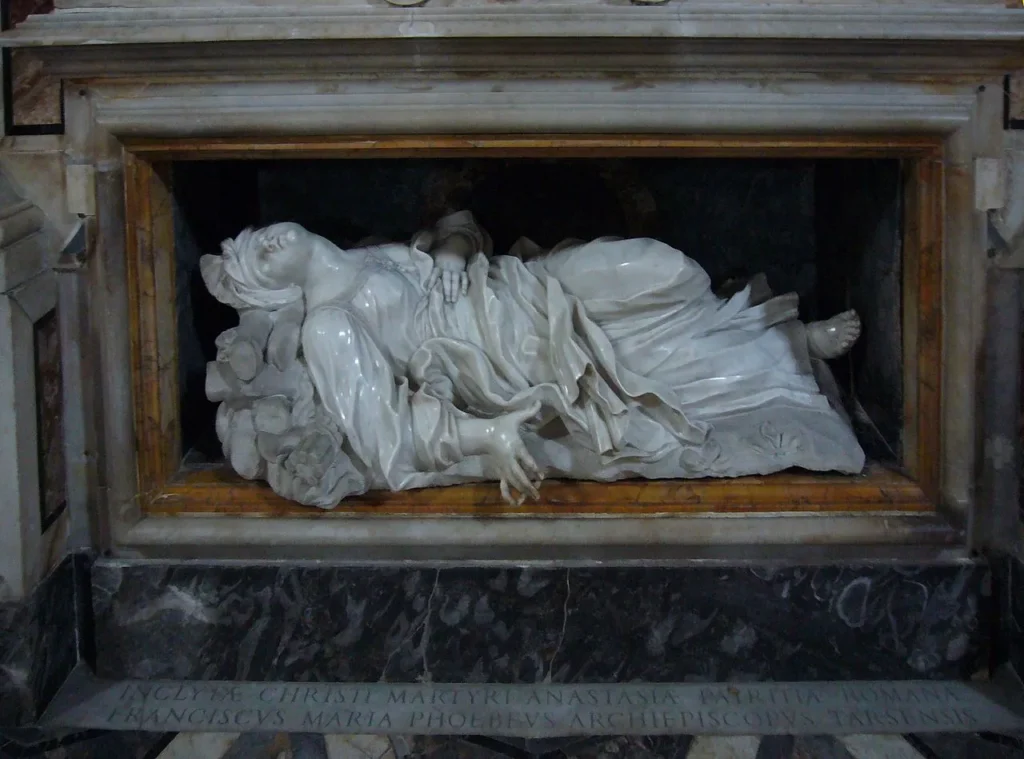
High Altar: Designed by Onorio Longhi, the high altar features a marble statue of St. Anastasia by Ercole Ferrata, completed posthumously by Francesco Aprile. The altarpiece depicts The Nativity of Christ by Lazzaro Baldi. A fresco of St Anastasia in Glory by Baldi adorns the apse above the altar.
Monuments: The transept houses monuments to Francesco Maria Febei and Pier Paolo Febei, sculpted by Giovanni Tommaso Ripoli. The right transept also contains an altar dedicated to St. Turibius, with an altarpiece by Francesco Trevisani.
Sacristy
The church has two sacristies: one at the start of the left aisle and the other at the end. The main sacristy contains an altar with a copy of an altarpiece by Vittore Carpaccio and is adorned with representations of notable cardinals of the church.
Feast Day
Feast Day: 25th December.
The Basilica of Saint Anastasia on the Palatine in Rome celebrates the feast day of Saint Anastasia of Sirmium on December 25th, the same as her general feast day in the Christian liturgical calendar. This basilica, dedicated to Saint Anastasia, is an important religious site in Rome, known for its historical and architectural significance.
Church Mass Timing
Monday : 7.00 pm
Tuesday : 7.00 pm
Wednesday : 7.00 pm
Thursday : 7.00 pm
Friday : 7.00 pm
Saturday : 7.00 pm
Sunday : 7.00 pm
Church Opening Time:
Monday : 8:00 am – 07:00 pm
Tuesday : 8:00 am – 07:00 pm
Wednesday : 8:00 am – 07:00 pm
Thursday : 8:00 am – 07:00 pm
Friday : 8:00 am – 07:00 pm
Sunday : 8:00 am – 07:00 pm
Contact Info
Address :
Piazza di Sant’Anastasia, 1, 00186 Rome RM, Italy.
Accommodations
Connectivities
Airway
Leonardo da Vinci International Airport (FCO), 00054 Fiumicino RM, Italy to Basilica of Saint Anastasia on the Palatine, Rome, Italy distance between 29 min (27.0 km) via A91.
Railway
Stazione FS di Roma Termini, Via Giovanni Giolitti, to Basilica of Saint Anastasia on the Palatine, Rome, Italy distance between 14 min (3.6 km) via Via Labicana.

